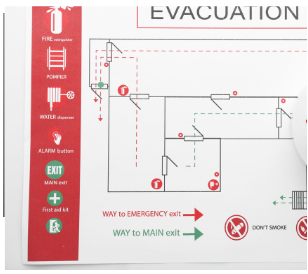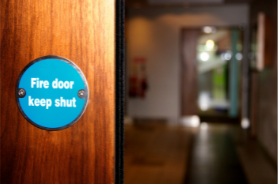Passive Fire : A life saving Innovation
- Home
- Our Services
- Passive Fire
Passive fire protection (PFP) is a critical component of any comprehensive fire safety strategy. Designed to contain fires or slow the spread within a building, PFP saves lives and protects property by providing additional time for evacuation and emergency response.
Unlike active fire protection measures - such as fire extinguishers and sprinkler systems which require activation or human intervention to work - passive fire protection is built into the structure of the building. It involves the use of fire-resistant walls, floors, and doors, as well as other materials and techniques designed to resist the heat of a fire and prevent it from spreading.
Key Elements of Passive Fire Protection:
- Compartmentation: This involves dividing a building into fire-resistant compartments to slow down fire spread. It's achieved using fire-resistant walls, floors, and doors.
- Structural Fire Protection: This involves the use of fire-resistant materials in the building's structure to ensure it remains stable for a longer period during a fire.
- Fire Stopping: Any gaps or openings due to utilities and services are sealed using special fire-resistant materials to prevent the spread of fire and smoke.
- Fire Doors: These are specially designed with materials that can resist fire for a certain period (typically rated for 30, 60, 90, 120 minutes or more). They help to compartmentalize a building and slow the fire's spread.
- Emergency Exit Routes: These include fire-resistant passageways, stairwells, and doors to ensure occupants can safely evacuate the building.
The benefits of passive fire protection are multi fold. Not only does it provide an essential safety measure, but it also reduces potential damage to the building, enables continuity of business operations post-fire, and can lower insurance premiums.
At the core of its function, passive fire protection is about safeguarding people's lives, enabling safer evacuation, and providing additional time for emergency services to respond. It is a vital investment in the structure and safety of any building, whether residential, commercial, industrial, or public.
At Mcintyre Compliance Services we undertake all aspects of both passive and automatic fire prevention, ensuring complete fire safety compliance. This includes the design, installation, certification and maintenance of alarms, extinguishers, fire doors and curtains, compartmentation, and emergency lights. We deliver and administer end-to-end systems providing our clients with peace of mind and preventing them from possible prosecution.
Please contact us at passivefire@mcintyrecs.com to discuss how we can ensure your fire compliance and safety.



